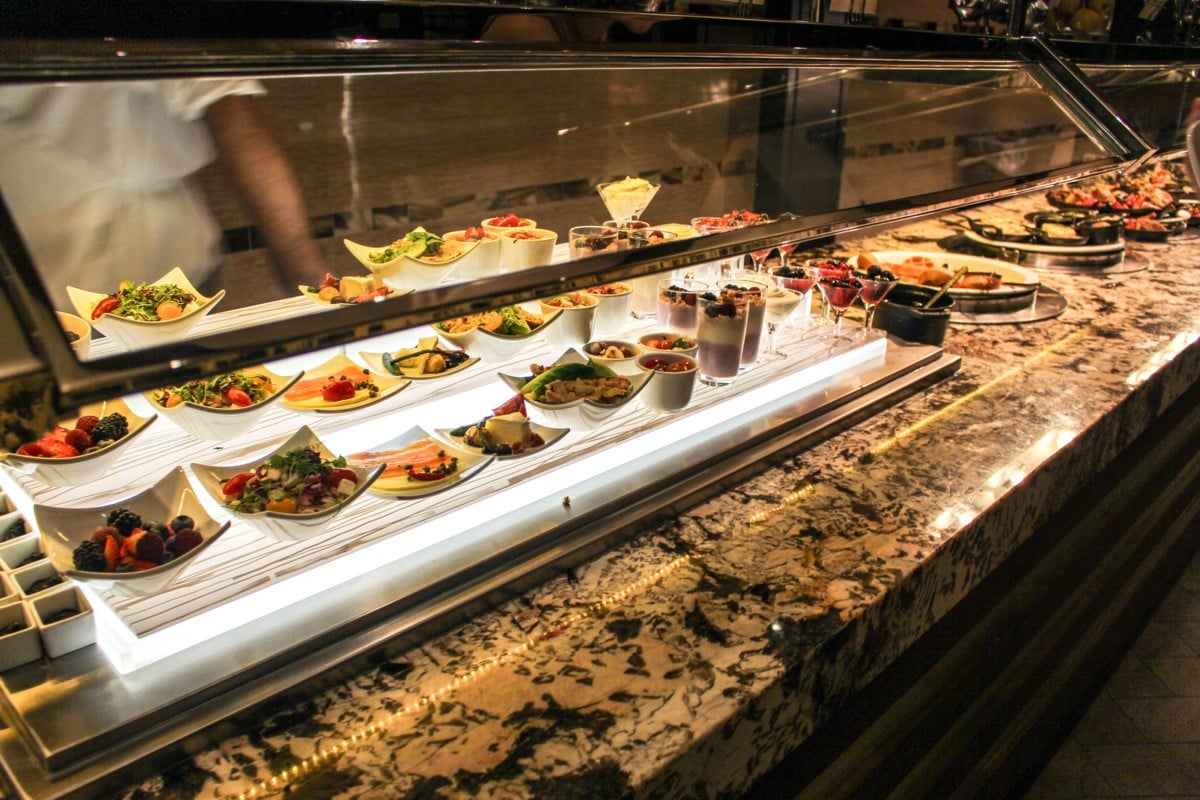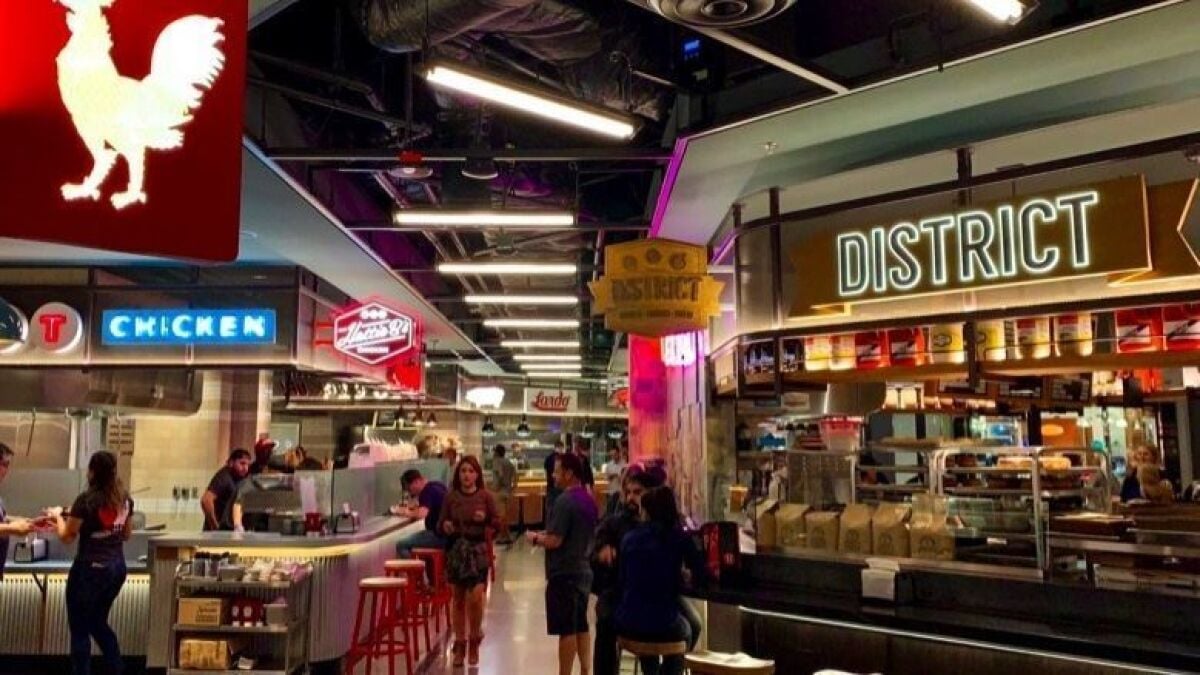[ad_1]
Posted on: March 6, 2023, 02:10h.
Last updated on: March 6, 2023, 02:10h.
Buffets were once as vital to the Vegas experience as showgirl shows and free parking. Now, it appears they’re headed the same way. Ten of the Strip’s 17 buffets have either closed permanently, or are expected to.
The resorts with shuttered buffets include Mirage, Paris, Treasure Island, Harrah’s, and Planet Hollywood. Mandalay Bay and the Flamingo have closed theirs since the pandemic shutdown and are not expected to reopen them.

On the Las Vegas Strip, only seven buffets remain (the Bacchanal at Caesars Palace, The Buffet at Bellagio, Wicked Spoon at Cosmopolitan, The Buffet at Wynn Las Vegas, MGM Grand Buffet, the Circus Buffet at Circus Circus, and The Buffet at Luxor) where 18 once stood.
“I think they’re replacing buffets because a lot of people just decided they didn’t want to reopen their buffets at exactly the same time, around COVID,” Al Mancini, Las Vegas food writer, told Casino.org. “But even before the pandemic, I don’t know that buffets were a profit center. The resorts were trying to come up with ways to sell them to people — like do a tour of all the buffets, all-day passes to eat at every buffet within the Caesar’s portfolio in a day.
“So I think we had warning signs that, unless you were doing it huge, like the Bacchanal at Caesars, why do it?”
According to Mancini, who also created the Neon Feast restaurant guide app, the old Vegas model of having something for everyone to prevent guests from ever leaving the casino isn’t realistic anymore.
“Casinos have almost given up on that idea,” he said. “So now the question becomes, ‘OK, do we need to have a buffet here?’ If you’re Caesars Entertainment, why not put all of your buffet eggs into the Bacchanal basket? Have something that’s amazing and talked about on the news and try to get all your customers from every Caesar’s property into Bacchanal. Why do lesser versions in every property?
“Similarly MGM Resorts still has Bellagio Buffet, which was always their top buffet. And that means if an MGM Players Card holder wants a buffet, they can send them to Bellagio.”
Four-Walled Food
Getting out of the food business allows casino companies to concentrate on areas where they already have a branding advantage, and to bring in established food brands as tenants that have never been in Las Vegas before. It’s the same reason most casino companies have gotten out of the show-business game, renting out their theaters to independent producers beginning in the ’80s.
Like production shows, buffets weren’t run before then as a means to recoup the money spent on them. They were considered loss leaders, their true purpose being to draw gamblers into casinos and keep them there. Back then, gambling still accounted for about 75% of an average casino’s revenue.
Today, however, that revenue stream has flipped, with non-gambling sources accounting for the 75%.
“A pass for the buffet used to be the first comp you would ask for when you played at a blackjack table,” Mancini said. “That was the entry-level comp. But having an inexpensive meal that you can just give people as a comp is not the concern of the casinos anymore. Having quality food, having food that people talk about, food that you can put in advertisements that screams, ‘Oh my God, look at all the celebrity chefs in this property!’ That’s what it’s about now.”
Enter the Food Hall
Food halls are basically food courts with restaurants closer to Michelin-star quality than Sbarro’s and Hot Dog on a Stick. Often, they’re nicknamed foodie courts.
“I think when people come to a place like Las Vegas, they still want the convenience of a food court, but they don’t just want to see that they just saw in the airport,” Mancini said. “Food halls are trying to curate a more upscale, interesting, exciting collection of food.”
Technically, the first food hall to open in Las Vegas was the Fulton Street Food Hall, which has been at Harrah’s since September 2014. That was more in name only, however, as it’s more of a food court and buffet mash-up.

Most foodies trace the trend’s origin in Las Vegas to the August 2018 opening of Block 16 Urban Food Hall at the Cosmopolitan. Block 16 features Hattie B’s Hot Chicken, a Nashville specialty bathed in daredevil spices; Chef David Chang’s Bāng Bar, which applies an Asian spin to spit-roasted shawarma; and Lardo, in which Chef Rick Gencarelli’s take on Portland pork sandwiches.
Eataly arrived next, in December 2018. Consisting of a dozen authentic Italian food counters, bars, cafes and other dining experiences in 40K square feet, it opened in the Park MGM, which rose from the ashes of the Monte Carlo, a resort that had a buffet. So technically, it was the first food hall to replace a buffet.
Famous Foods Street Eats opened in 2021 along with Resorts World, the first major new casino hotel to open on the Las Vegas Strip since the Cosmopolitan in 2010. It offers 16 Asian-inspired food stalls from dumplings from Hong Kong, to lechon from the Philippines, to fried chicken. Especially notable is Boon Tong Kee by Chef Thian Boon Hua, whose Hainanese chicken rice has received both a Michelin Bib Gourmand and Plate.
ARIA became the first resort to replace its buffet with a food hall without undergoing reconstruction and rebranding. It decided to make the change during the pandemic shutdown. Clique Hospitality curated the selection of 12 food stations at Proper Eats, including the first Seoul Bird outside of London, the only Wexler’s Deli outside of Los Angeles, and the New York breakfast staple Egghead by Tao Group.
“Going to a food hall is what people are more inclined to do now, rather than going to a buffet,” Clique founder Andy Masi told the Las Vegas Review-Journal. “It’s more individual dining choices with high-quality product. This is what the market is looking for.”
‘Not a Lot to Mourn’
For Mancini, there’s not a lot to mourn about the disappearance of once-ubiquitous Las Vegas Strip buffet — especially since the need for dining options for budget travelers, which the non-descript buffet once filled, is now filled adequately by ubiquitous food courts.
“On the contrary, I think it’s worth celebrating — in the same way I celebrate any move away from unremarkable dining options, towards more interesting and exciting chef-driven alternatives,” Mancini said. “I’d much rather have four or five exciting buffets operating on The Strip than a dozen boring ones.”
[ad_2]
Source link


